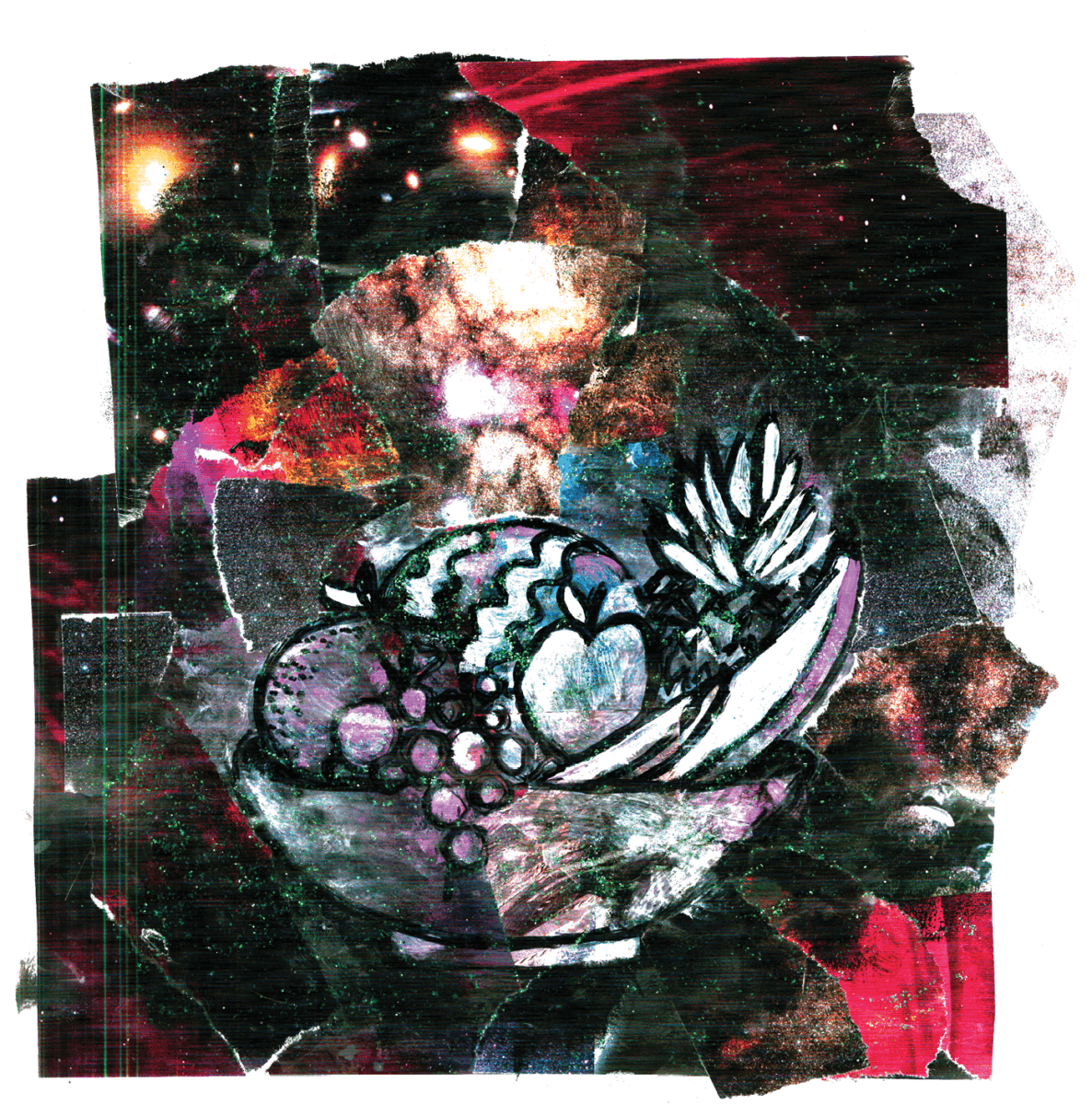Antimatter is one of the ultimate science-fiction ideas: matter with the incredible destructive power to ‘annihilate’ when it comes into contact with ordinary matter. In Dan Brown’s ‘Angels and Demons’, the idea of a destructive antimatter bomb is a key plot point. Despite what science fiction would have you believe, the scientific fact of antimatter is much more benign. In fact, you may have a common antimatter source lurking in your fruit bowl right now!
When scientists talk about the production of antimatter, it usually brings to mind particle accelerators – like the Large Hadron Collider at CERN – which are capable of producing vast amounts of antiparticles by colliding extremely energetic particles. However, some everyday items are actually tiny antimatter factories that don’t require such superconducting magnets. One form of radioactivity, beta decay, can produce anti-electrons or positrons. A radioactive element that decays to produce positrons is Potassium-40. A potassium-rich fruit, like that banana sitting in your fruit bowl, can contain up to 48 micrograms of radioactive potassium and will thus produce a positron every 75 minutes or so.
Should you be worried about your daily banana? The level of radiation produced by an average banana (known by scientists as the ’banana equivalent dose’) is a measure of the level of radiation exposure encountered on a daily basis. To put it simply, it isn’t harmful. In fact, eating a banana a day exposes you to substantially less radiation than what you would experience taking a plane ride from Canberra to Sydney. You would have to eat 200 bananas to be exposed to a comparable amount of radiation from a chest x-ray, and it would take around 100 million bananas to kill you (and the cause of death probably wouldn’t be radiation sickness)! The antimatter itself shouldn’t worry you either: the positron produced inside the banana will encounter an electron almost instantly, annihilating the positron before it can escape.
However, the story would be very different in space. Suppose you take all the radioactive potassium atoms and put them into orbit around the Earth. Space is a near-vacuum – there is around one atom per cubic centimetre, making it far less likely for a positron produced by radioactive atoms to bump into a rogue electron and annihilate. This means that positrons can float around for millions of years, carried on magnetic currents in interstellar space before they extinguish. The idea of radioactive material in space isn’t fanciful either. When dying stars form elements, they are often created in highly radioactive states which later decay. Many of these decays can produce positrons, which then float around for a while before eventually annihilating.
So, is there antimatter annihilating with electrons out in space? For fifty years, astronomers have observed antimatter positrons via the high energy radiation produced by this process. The exact origin of these positrons has been uncertain for most of that time. However, a small team of researchers, including several astronomers from ANU, think they may have found the answer. They have concluded that a rare type of dying star system may be responsible.
Unlike the sun, some stars are born in pairs, known as ‘binary star systems’. Once they run out of fuel to produce heat and light, all that remains of these deficient mass binary systems is a pair of ‘white dwarf stars’. If a white dwarf star forms on its own, it will eventually cool and fade. However, in a binary system, two white dwarf stars can spiral closer and closer together until they merge, causing a supernova explosion. This explosion produces large quantities of radioactive material.
Last year, in a paper published by ANU astronomer Dr Roland Crocker and his collaborators, the astronomers described how this process can form radioactive titanium, which decays to produce positrons. Even if only one of these supernovae occurs in our galaxy every few hundred years, they can generate almost 10^42 positrons per second, explaining the origin of most of this galactic antimatter.
What also makes these supernovae special, is that they occur among five billion-year-old stars, whereas ordinary supernova explosions are usually associated with stars less than a billion years old. Hence, scientists mapping the annihilation of positrons find that most positrons annihilate where the oldest stars in our galaxy are, not in regions where one would expect to see ordinary, run-of-the-mill dying stars. This offers a crucial piece of the puzzle of understanding the origin of galactic positrons.
So next time you look at your fruit bowl, you can remind yourself that your banana and our galaxy have something in common that sounds more like science fiction than fact: they’re both excellent sources of antimatter. Just keep your banana away from Dan Brown’s Illuminati.
We acknowledge the Ngunnawal and Ngambri people, who are the Traditional Custodians of the land on which Woroni, Woroni Radio and Woroni TV are created, edited, published, printed and distributed. We pay our respects to Elders past and present. We acknowledge that the name Woroni was taken from the Wadi Wadi Nation without permission, and we are striving to do better for future reconciliation.
